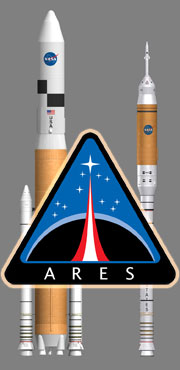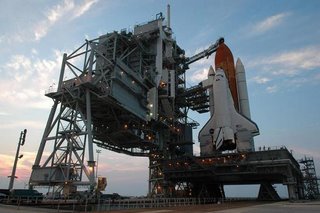 HISTORIC MORSE CODE RADIO STATION KPH RETURNS TO THE AIR FOR "NIGHT OF NIGHTS VII"
HISTORIC MORSE CODE RADIO STATION KPH RETURNS TO THE AIR FOR "NIGHT OF NIGHTS VII"From the
Maritime Radio Historical Society website. Photo and information courtesy of MRHS.
Former RCA Station KPH Celebrates Its 101st Anniversary
Coast Station KSM Celebrates Its 1st Anniversary
Coast Stations WLO, KLB, NMC and NOJ To Be On The Air
New Frequencies for KSM, KLB and NOJ
In the seventh annual event that has become known as the "Night of Nights", historic Morse code radio station KPH will return to the air in commemoration of the last commercial Morse message sent in the United States. Frequencies and reception report information for all stations appear below.
KPH, the ex-RCA coast station located north of San Francisco, will return to the air for commemorative broadcasts on 12 July at 1701 PDT (13 July at 0001 UTC), 7 years and one minute after the last commercial Morse transmission in the US. These on-the-air events are intended to honor the men and women who followed the radiotelegraph trade on ships and at coast stations around the world and made it one of honor and skill. Transmissions are expected to continue until at least midnight PDT (0700 UTC).
Veteran Morse operators, including former KPH staff members, will be on duty at the receiving station at Point Reyes, CA listening for calls from ships and sending messages just as they did for so many years before Morse operations were shut down.
The transmitters are located 18 miles south of Point Reyes in Bolinas, CA at the transmitting station established in 1913 by the American Marconi Co. The original KPH transmitters, receivers and antennas will be used to activate frequencies in all the commercial maritime HF bands and on MF as well.
Many of the KPH transmitters will be 50s vintage RCA sets. KSM will use a 1940s vintage Press Wireless PW-15 transmitter will be on its 12 MHz frequency. Power output will be 4 to 5kW. The transmitting antennas include a Marconi T for MF, double extended Zepps for 4, 6 and 8 MHz and H over 2s for 12, 16 and 22 MHz.
KPH will send traffic lists, weather and press broadcasts as well as special commemorative messages, some of which will be sent by hand. At other times the KPH and KSM "wheel" will be sent to mark the transmitting frequencies.
Members of the public are invited to visit the receiving station for this event. The station will be open to visitors beginning at 1500PDT (3:00pm). The station is located at 17400 Sir Francis Drake Boulevard and is on the route to the Point Reyes lighthouse. Watch for a cypress lined driveway on the right about a mile past the entry to Coast Guard station NMC.
KPH is operated by the Maritime Radio Historical Society in cooperation with the Point Reyes National Seashore, part of the National Park Service.
Further information may be found on the
Maritime Radio Historical Society Web site or by contacting Richard Dillman at +1 415-990-7090 (email: rd@radiomarine.org or Tom Horsfall at +1 510-237-9535 (email: wa6ope@hotmail.com. Station Information follows...
KPH
KPH will transmit on 4247.0, 6477.5, 8642.0, 12808.5, 17016.8 and 22477.5 kHz on HF and 500 and 426 kHz on MF. These frequencies have been made available through the generous cooperation of Globe Wireless, the current owner of the KPH and KFS licenses. KPH operators will listen for calls from ships on ITU Channel 3 in all bands. The Channel 3 frequencies are 4184.0, 6276.0, 8368.0, 12552.0, 16736.0 and 22280.5 kHz on HF and 500 kHz on MF. Reception reports may be sent to: Ms. DA Stoops, P.O. Box 381, Bolinas CA 94924-0381 USA. Denice is a former KPH operator and was the first female telegrapher hired at the station.
KSM
Note the addition of a 16 MHz channel for KSM this year. KSM will transmit on 426, 500, 6474, 12993 and 16914 kHz. KSM will listen for calls from ships on 500 kHz and HF Channel 3 (see KPH listing for frequencies). Reception reports may be sent to: Ms. DA Stoops, P.O. Box 381, Bolinas CA 94924-0381 USA
WLO
This information has not been confirmed by WLO at the time of this announcement. WLO will transmit on 438, 500, 8514.0 and 12660.0 kHz. WLO will listen for calls from ships on 500 kHz and HF Channel 3 (see KPH listing for frequencies). Reception reports may be sent to: WLO/KLB, 700 RINLA AVENUE, MOBILE, ALABAMA 36619 USA or via email to: wloradio@wloradio.com.
KLB
Note the expanded frequencies for KLB! This year KLB has added MF, a 2 MHz frequency and a 12 MHz frequency. A tip of the MRHS earphones to CJ of KLB for all the work he has done to bring this about. KLB will transmit on 488, 500, 2063.0, 6411.0 and 12917.0 kHz. KLB will listen for calls from ships on 500 kHz and HF Channel 3 (see KPH listing for frequencies). Reception reports may be sent to: WLO/KLB, 700 RINLA AVENUE, MOBILE, ALABAMA 36619 USA or via email to: wloradio@wloradio.com
NMC
NMC will transmit on 448, 472, 500, 6383.0, 8574.0 and 17220.5 kHz. NMC will listen for calls from ships on 500 kHz and HF Channel 3 (see KPH listing for frequencies). Reception reports may be sent to: COMMANDING OFFICER, ATTN ITC ERIC SIMMONS, COMMUNICATIONS AREA MASTER STATION PACIFIC, 17000 SIR FRANCIS DRAKE BLVD, POINT REYES STATION, CALIFORNIA 94956-0560 USA
NOJ
Note that NOJ will be operational on MF this year! NOJ will transmit on 416, 470, 500, 8650.0, 12889.5 and 16909.7 kHz. NOJ will listen for calls from ships on Channel 3 (see KPH listing for frequencies). Reception reports may be sent to: COMMANDING OFFICER, ATTN OSCM WILLIAM KECKLER, US COAST GUARD COMMUNICATIONS STATION KODIAK, PO BOX 190017, KODIAK, ALASKA 99619 USA
BT
BV ES VY 73 TO ALL,
MRHS









